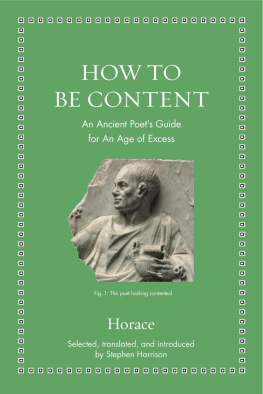Other Titles by Michael Casey
Fully Human, Fully Divine
An Interactive Christology
Sacred Reading:
The Ancient Art of Lectio Divina
Reading the Clouds
Mission Spirituality for New Times
Toward God
The Ancient Wisdom of Western Prayer
A GUIDE TO
LIVING IN THE
TRUTH

Saint Benedicts Teaching on Humility
MICHAEL CASEY
Author of Toward God and Sacred Reading

Published by Liguori/Triumph
An imprint of Liguori Publications
Liguori, Missouri
liguori.org
Copyright 1999, 2001 by Michael Casey, OCS
Originally published in 1999 by St. Bedes Publications, 271 N. Main St., P.O. Box 545, Petersham, MA 013660545
All rights reserved. No part of this publication may be reproduced, stored in a retrieval system, or transmitted in any form or by any meanselectronic, mechanical, photocopy, recording, or any otherexcept for brief quotations in printed reviews, without the prior permission of the publisher.
Library of Congress Cataloging-in-Publication Data
Casey, Michael, monk of Tarrawarra.
[Truthful living]
A guide to living in the truth : Saint Benedicts teaching on humility / Michael Casey.
p. cm.
Originally published: Truthful living. Petersham, MA : Saint Bedes Publications, 1999.
Includes bibliographical references.
ISBN 0-7648-0739-0 (pbk.)
1. Benedict, Saint, Abbot of Monte Cassino. De humilitate. 2. HumilityChristianityHistory of doctrines. I. Title.
BX3004.Z5 C34 2001
Excerpts from the English translation of the Catechism of the Catholic Church for the United States of America, 1994, United States Catholic Conference, Inc.Libreria Editrice Vaticana. Used with permission.
Printed in the United States of America
12 / 9 8 7
Contents

Foreword

I offer you these reflections on Saint Benedicts chapter on humility as a stimulus for your own meditation on this text. I have never found it an easy chapter to come to grips with, despite having worked with it many times since my first attempt in 1974. Nor have I attempted to say the last word in these pages. I simply invite you to join me in interacting with what Saint Benedict has written, trying to make sense of it and to hear in these sometimes daunting words the call of the Gospel. As always, we hear the challenge according to our own situation and for most of us, this means in the context of a world far different from what Benedict knew.
I have tried to keep abreast of existing scholarship on the Rule of Benedict and on this chapter in particular, and to allow it to influence my thinking. I have not, however, aimed at writing a scholarly commentary, but simply to begin with you, the reader, the process of a critical and practical reflection on an important evangelical principle.
I would like to express my appreciation to all those groups in many countries working with whom I have developed these thoughts. May I say that it has been your interest and encouragement that have motivated me to attempt a more systematic elaboration of the things we spoke about together. Thank you.
Abbreviations

| ABR | American Benedictine Review |
| ASOC | Analecta Sacri Ordinis Cisterciensis, later Analecta Cisterciensia |
| CFS | Cistercian Fathers Series (Kalamazoo) |
| COCR | Collectanea Ordinis Cisterciensium Reformatorum, later Collectanea Cisterciensia |
| CChr | Corpus Christianorum, Series Latina |
| CSQ | Cistercian Studies, later Cistercian Studies Quarterly |
| CSS | Cistercian Studies Series (Kalamazoo) |
| DSp | Dictionnaire de Spiritualit |
| PL | Patrologia Latina |
| RB | Rule of Benedict |
| RBS | Regulae Benedicti Studia |
| RM | Rule of the Master |
| SBOp | Sancti Bernardi Opera: The Works of Bernard of Clairvaux |
| Adv | Sermons for Advent |
| Apo | Treatise: Apologia |
| Dil | Treatise: On the Love of God |
| Ep | Letters |
| Hum | Treatise: On the Steps of Humility and Pride |
| Humb | Sermon on the Death of Humbert |
| Quad | Sermons on Lent |
| SC | Sermons on the Song of Songs |
| SChr | Sources Chrtiennes |
ONE
Finding a Way to Humility

H umility is a beautiful quality to find in a person. It is a characteristic feature of those who have not forgotten their roots. The term humility is related to the word humus and points to a connectedness with the earth and, by extension, with all that inhabits the earthly sphere. The book of Genesis reminds us that our race originated from the soil of earth: adam from admah; humanity from humus. Humble people are down to earth, they are not alienated from their own nature. They accept their origins and are content to be what they are.
A first approach to understanding humility is to see it as that total self-acceptance typical of untarnished humanity. Those who are humble experience no shame. They do not need lies and evasions to inflate their importance in the eyes of their associates, or to buttress their self-esteem. They have overcome the tendency to regard others as competitors or rivals, and so they work with whatever they have, and waste no time envying those who possess different qualities. The humble are equally content with both the gifts and the limitations that come from their nature or their personal history. Humility brings with it a fundamental happiness that is able to cope with external difficulties and sorrows.
The humble are the people about whom Jesus spoke in the Sermon on the Mount: the poor in spirit, the meek, the oppressed. If we regard the Beatitudes as expressive of the philosophy Jesus himself lived, then these sayings can be considered as autobiographical. Jesus is the supreme example of humanity uncomplicated by sin. He is the model of this quality to which we give the name humility. This is why he said, Learn of me, for I am meek and humble of heart (Mt 11:29). Taking together all the New Testament texts that speak of the humility of Jesus, from the kenosis of Philippians 2:7 to the washing of the disciples feet in John 13, we are led to recognize a distinctive mark of Jesus personal style. So much so that, perhaps, we can substitute another word for this quality: Christlikeness. Humility is that network of attitudes that springs from a radical conversion of heart, and signals a deep, inner conformity with Christ. Growth in humility is powered by the simple desire to become like Christ.
Our Difficulty With Humility
For many people humility does not seem like an appropriate ideal. This was true for the ancient Greeks, and it certainly corresponds to the way many of our contemporaries feel. The word itself engenders strong negative reactions, since it seems to point to a world of values which negates many of the most cherished advances in recent self-understanding. The idea of humility evokes the image of a moral tyranny which imparts only fear, guilt, and an abiding sense of failure. It has nothing of encouragement or warmth to offer, only a carping insistence on human sinfulness. The robust hyperbole of some traditional writers does not help the situation; frequently their writings provoke only irritation and rejection on the part of modern readers.
Next page









